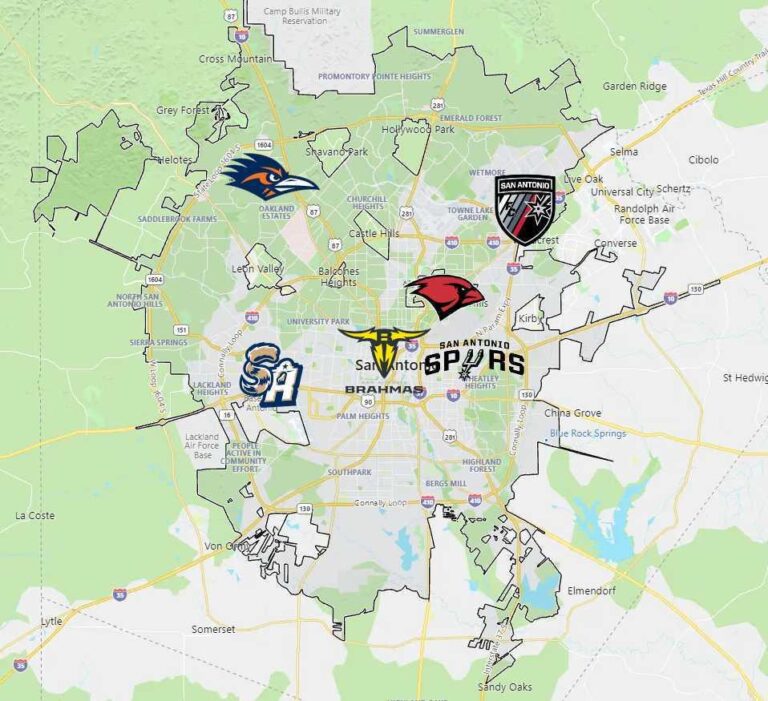San AntonioŌĆÖs Vanished Sports Teams: A Legacy Beyond the Game
Echoes of San AntonioŌĆÖs Former Sports Franchises and Their Cultural Footprint
San AntonioŌĆÖs vibrant sports scene has been shaped not only by its enduring teams but also by those that have faded into history. While the San Antonio Spurs remain a beacon of basketball excellence, other franchises like the San Antonio Riders from the World League of American Football and the San Antonio Gunslingers of the USFL, though short-lived, played pivotal roles in cultivating local enthusiasm and community spirit. These teams provided platforms for emerging athletes and helped forge a passionate fan base that continues to influence the cityŌĆÖs sporting identity.
Beyond the thrill of competition, these defunct teams contributed significantly to San AntonioŌĆÖs economy and civic pride. Their influence can be seen in grassroots initiatives, such as youth soccer leagues inspired by semi-professional clubs, and in the lively atmosphere of local sports venues and establishments. Below is a snapshot of some notable teams, their operational periods, and their lasting contributions to the cityŌĆÖs sports culture:
| Team | League | Years Active | Legacy |
|---|---|---|---|
| San Antonio Stags | ABA (Basketball) | 1973-1974 | Ignited early pro basketball interest, paving way for Spurs |
| San Antonio Texans | CFL (Football) | 1995 | Expanded footballŌĆÖs footprint, boosting local gridiron enthusiasm |
| San Antonio Scorpions | NASL (Soccer) | 2012-2015 | Elevated soccerŌĆÖs grassroots presence, influencing current developments |
The Journey of San AntonioŌĆÖs Defunct Professional Teams: Triumphs and Trials
San AntonioŌĆÖs professional sports history is marked by ambitious ventures that, despite their eventual disappearance, left a lasting impression. The San Antonio Gunslingers of the USFL, active during the mid-1980s, are remembered for their spirited play amid financial hardships and the leagueŌĆÖs ultimate dissolution. Similarly, the San Antonio Rampage brought the excitement of ice hockey to the city for nearly two decades before relocating to Nevada, leaving a void for local hockey fans. These franchises symbolized San AntonioŌĆÖs efforts to diversify its sports offerings beyond basketball and baseball, though challenges such as market limitations, ownership instability, and league uncertainties often dictated their fate.
Additional franchises that once energized the city include:
- San Antonio Talons (Arena Football League)
- San Antonio Silver Stars (WNBA, prior to relocation)
- San Antonio Scorpions (NASL)
Each of these teams contributed uniquely to San AntonioŌĆÖs sporting fabric but ultimately succumbed to financial constraints and competitive pressures. The table below outlines their operational timelines and final outcomes:
| Franchise | League | Years Active | Final Status |
|---|---|---|---|
| Gunslingers | USFL | 1984-1985 | Disbanded following league collapse |
| Rampage | AHL | 2002-2020 | Relocated to Henderson, Nevada |
| Talons | Arena Football | 2012-2014 | Ceased operations after 2014 season |
| Silver Stars | WNBA | 1997-2017 | Moved to Las Vegas |
| Scorpions | NASL | 2012-2015 | Franchise dissolved |
Insights Gained From the Departure of San AntonioŌĆÖs Sports Franchises
The loss of several professional teams in San Antonio underscores the complex interplay between community enthusiasm, financial sustainability, and league dynamics. The departure of franchises such as the predecessors to the Spurs and various minor league teams reveals that passionate fan support alone cannot guarantee longevity. Economic realities, stadium negotiations, and shifting priorities within leagues often determine whether a city can maintain its sports presence.
Critical lessons from these experiences include:
- Investment in Facilities: Modern, well-equipped venues are essential to attract and retain teams, as outdated infrastructure often leads to relocations.
- Market Viability: While loyal fans are vital, the overall marketŌĆÖs capacity to financially support a team is a decisive factor.
- League Stability: Changes in league structures, expansions, or contractions can abruptly reshape a cityŌĆÖs sports environment.
| Team | Year of Departure | Primary Cause |
|---|---|---|
| San Antonio Stars (WNBA) | 2017 | Relocation for market expansion |
| San Antonio Talons (AFL) | 2014 | League instability |
| San Antonio Rampage (AHL) | 2020 | Changes in team affiliation |
Revitalizing San AntonioŌĆÖs Sports Scene: Strategies for a Thriving Future
Reinvigorating San AntonioŌĆÖs sports culture requires a comprehensive strategy involving city officials, sports organizations, and community members. Prioritizing youth development programs that cultivate local talent from an early age is crucial. Collaborations with schools and community centers can establish strong pipelines for future athletes, ensuring the city remains a hub for sports excellence. Additionally, investing in cutting-edge facilities will not only attract new franchises but also enhance fan engagement and city pride.
Recommended approaches include:
- Boosting fan interaction through immersive digital platforms and enhanced in-venue experiences
- Launching targeted marketing campaigns to increase attendance at local sports events
- Fostering public-private partnerships to fund infrastructure improvements and sponsorships
- Promoting inclusivity and diversity in sports to expand community involvement and support
| Initiative | Anticipated Benefit | Implementation Timeline |
|---|---|---|
| Youth Sports Academies | Enhanced development of local athletes | 1-3 years |
| Facility Modernization | Attraction of new teams and major events | 2-5 years |
| Innovative Fan Engagement | Increased attendance and fan loyalty | Immediate and ongoing |
| Diverse Sports Programs | Broadened fan base and athlete diversity | 1-2 years |
Final Reflections
Although many of San AntonioŌĆÖs former sports teams no longer compete, their influence remains woven into the cityŌĆÖs athletic heritage. These franchises, despite their brief tenures, helped shape a passionate and resilient sports community. As San Antonio continues to evolve and attract new teams, the memories of these past organizations serve as a testament to the cityŌĆÖs enduring love for sports and its commitment to fostering a vibrant athletic future.




